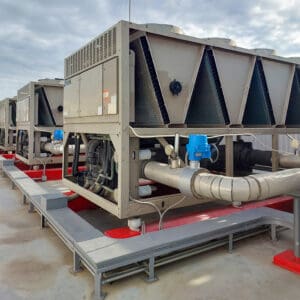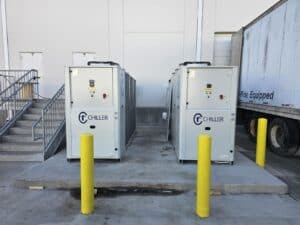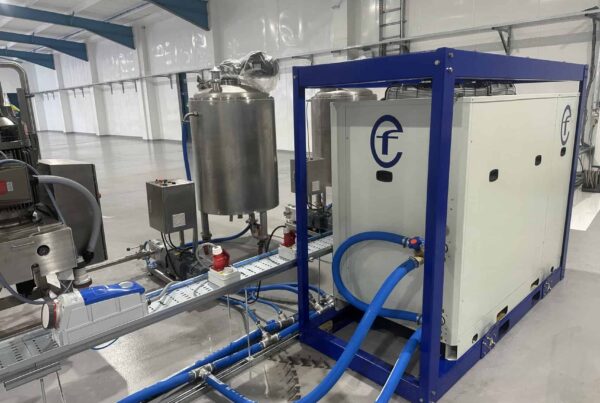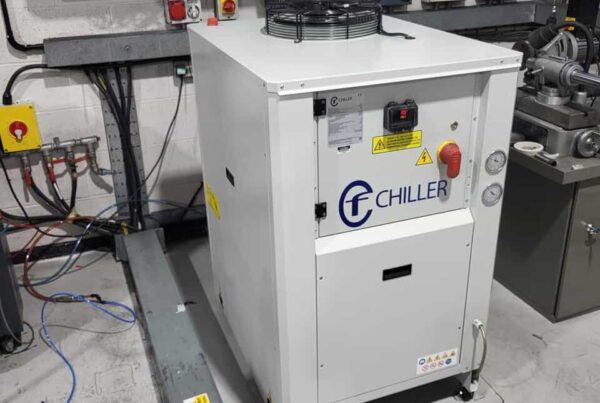A low sticker price might look tempting but with chiller units, the cheapest option is rarely the most economical. In our experience, a poorly specified unit can add 15 to 20 per cent to energy bills within just two years. Beyond higher running costs, cut-price systems often require more repairs and reach the end of their service life much sooner. The real question is not what you can save today but how reliably your system will perform across its full lifespan.
Why Cheap Chiller Units Are A False Economy

Chillers are complex machines. If build quality, components or controls are compromised to hit a price point, lifespan and efficiency suffer. A well-specified unit can operate efficiently for well over decade, or even more, with routine care. Cut-price machines often fail far sooner and they draw more power to achieve the same cooling output. Limited parts availability and poor technical support amplify the risk and the spend.
When Cheap Units Might Make Sense
There are edge cases where a lower-cost or temporary option is reasonable. Events can use modular chillers for a defined period. Sites with seasonal peaks may justify short-term capacity. After an unexpected failure, a stopgap can keep lines running while a permanent system is sourced. In these scenarios, chiller unit hire offers fast deployment without locking you into a poor long-term choice.
Better Alternatives To Buying Cheap
If capital is constrained, consider professionally refurbished equipment rather than the lowest-cost new unit. Used and reconditioned systems that have been tested and recommissioned provide dependable performance at a lower price point. For permanent installations, getting the specification right up front beats paying for upgrades later.
Sizing is critical. An undersized unit will run hot, trip on faults and wear out early. An oversized unit will short-cycle and waste energy. Our chiller unit Capacity Calculator is a practical starting point for matching cooling demand to capacity.
Factors That Matter More Than Price

Before you buy, consider the technical and operational factors that determine lifetime value. The cheapest option rarely accounts for these essentials.
Capacity And Load Profiling
Map real demand, not just nameplate estimates. Consider peak loads, part-load operation and duty cycles across seasons. Accurate profiling avoids the twin penalties of oversizing and undersizing and gives you a stable platform for growth.
Installation Environment
Indoor units face higher ambient temperatures, dust and airflow constraints. Outdoor units benefit from free air but must handle rain, UV and frost. Location affects coil cleanliness, fan performance and servicing frequency. Choosing the wrong placement inflates both energy and maintenance costs.
System Type And Compatibility
Air-cooled and water-cooled systems suit different infrastructures. Water-cooled machines can offer superior efficiency with towers or adiabatic coolers, but they demand the right pipework, filtration and control strategy. Compatibility with existing pumps, headers and BMS avoids costly redesign and speeds commissioning.
Maintenance And Servicing
Every chiller needs routine care to stay efficient. Cheaper machines tend to need more attention and suffer more faults. A planned approach to chiller unit maintenance, servicing and repairs preserves efficiency, extends lifespan and reduces emergency interventions.
The Cost Of Downtime And Poor Performance

The most expensive part of a bad purchase is not the invoice. It is the lost output, waste and reputational damage when cooling fails. In food production, temperature drift can spoil batches. In plastics, interruptions cascade through moulding schedules. In data centres, thermal excursions risk hardware and uptime penalties. A correctly specified system pays for itself through stable performance and predictable costs.
Why Different Industries Need The Right Chiller, Not the Cheapest
Real-world applications highlight why cutting corners on chillers rarely pays off. In the automotive industry, automotive chiller units are critical for keeping production lines stable under continuous demand. Breweries rely on brewery chiller units to control fermentation temperatures, where even a short failure can compromise entire batches. In plastics, injection moulding chiller solutions need to handle rapid cycling and variable loads. Each sector shows that investing in the right chiller protects product quality, keeps operations running smoothly and avoids the far higher costs of downtime.
Choosing The Right Chiller Unit With Evolution Cooling

Price matters, but fitness for purpose matters more. We help you balance capital and operating costs, assess site constraints and plan for future load. Whether you need a new system, a reconditioned unit or temporary capacity, our advice is grounded in real-world performance, not short-term savings. If you want tailored guidance for your site, please contact our team for a straightforward assessment and clear recommendations.





